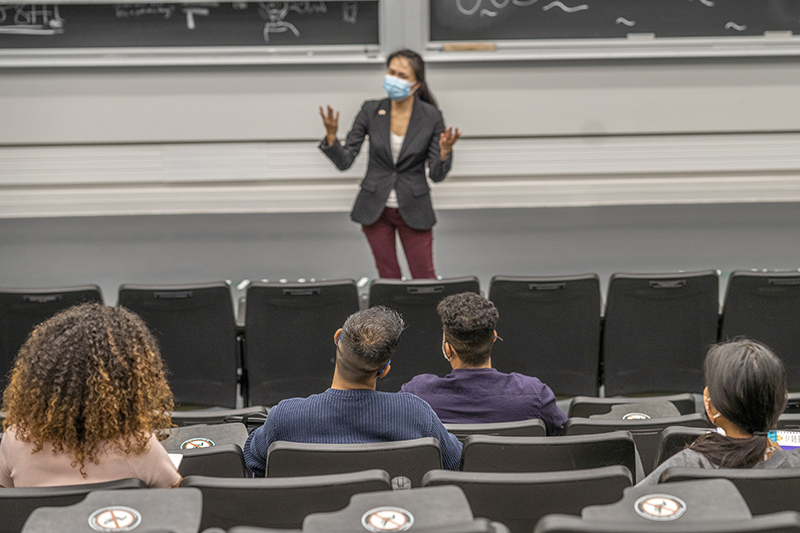
While the COVID-19 pandemic has not been declared over, it may have permanently changed the way we do things as facility officers. Initially, we implemented sanitization procedures that were previously ignored or reduced due to budget cuts. APPA Level 2 cleaning of restrooms got bumped up a little, and in some cases, to Level 1. Cleaning of classrooms and corridors was bumped up as well, with many institutions implementing daily sanitization of light switches and door hardware. It’s not clear yet if these practices will remain after the pandemic is “over” or whether they will gradually disappear.
Other observations to consider could be the following:
Food Services: From what was the popular scatter-and-graze model (where students can self-serve at something akin to the dining facilities of the ’70s), now servers dish out portions onto single use “take-out” dining ware that is thrown away—a big hit to sustainability.
Ventilation: One would assume that increased ventilation in buildings would add fresh air and reduce recycled air, and that sometimes the addition of UVC sterilization in ductwork would increase utility costs due to increased runtime of ventilation equipment and other electric loads. However, a brief survey of facility officers suggested the costs were less or about the same. Maybe the reduced traffic through opened doors accounts for some of the offset; it will be hard to say until after these changes are dropped. Utility services affect a major portion of the campus carbon footprint.
Space: One of the bigger impacts with a long-term outcome from pandemic changes may be the realization that many of the services delivered onsite and/or in person are not needed. Student-faculty contact hours have been greatly reduced using virtual or hybrid courses, which, in turn, results in reduced demand for instructional spaces (classrooms and instructional labs). While instructional space typically doesn’t comprise a major portion of college or university space, it is a change in the delivery method.
Staffing: More significant from a space (and campus-growth perspective) is the number of employees who must be on campus to provide meaningful service. This is particularly true among administrators and support personnel, but it also affects faculty. Campus office space may comprise 30% or more of the total assignable space. If 50% or more of this space is no longer needed for employees to do their job, there is a significant opportunity to avoid constructing new space as the student population grows. The most sustainable space is that which is repurposed or not built new.
What Will Become Normal Operations?
We have yet to see what will really happen to our campuses after the pandemic. It may not be over in the upcoming academic year, although some universities are planning “normal” operations. Measuring campus sustainability after the pandemic will be better understood in a few years via the APPA Facilities Performance Indicators (FPI) report or the APPA Key Facilities Metrics (KFM) survey. Be sure to participate. Also, look at APPA’s COVID Town Hall Archives for more.
Ted Weidner is an associate professor at Purdue University, West Lafayette, IN, and consults on facilities management issues primarily for educational organizations. He is also a member of the APPA Standards and Code Council (ASCC). He can be reached at [email protected].
Code Talkers
Code Talkers: Highlights the various codes, laws, and standards specific to educational facilities and explains the compliance issues and implications of enforcing these measures. To contribute, contact Kevin Willmann, FM Column Editor.
See all Code Talkers.


